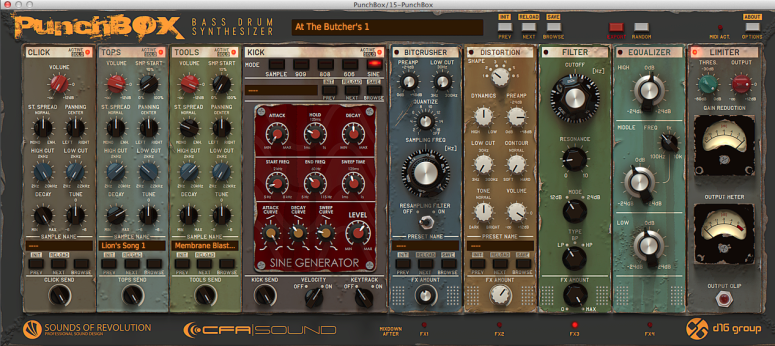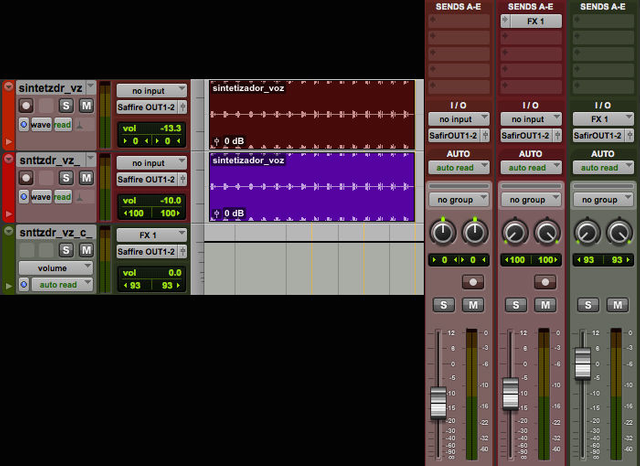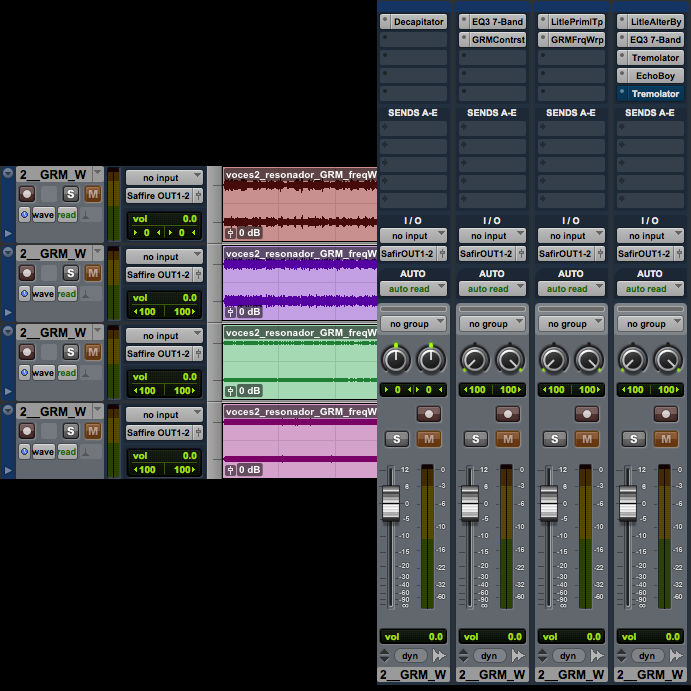Layering: the art of sculpting sound

Back in the tenth century, the Japanese perfected the art of manufacturing a lethal and versatile warrior sword known as katana (刀). With the sharpness of a razor, its blade is hard and flexible at the same time. It can resiliently stand a strong hit as well as it can decapitate a head with a single swing. In order to achieve that, two different types of steel are used; hard material on the edge and a more ductile material on the back of the blade. The process itself is fascinating, and it's a perfect analogy for what layering is.
Sound is like a modeling clay. It can be shaped in any imaginable way, but for getting the desired result, sometimes several different clays from different shapes and colors have to be combined. That's what we call "layering".
Layering for mixing
I was still a sound engineering student when I received my first mixing assignment. It was a simple songwriter track with vocals, acoustic guitars and cello. The cello was just an accompanying instrument but there was a moment when it had to be heard on top of everything. I struggled to find the perfect equalization that worked for both parts so I decided to ask a teacher for help. He was astonished when he found out that I wanted to use just one equalizer for the whole length of the song. "They are different instruments" -he told me. After creating two copies of the same cello track, it was easier to mix each copy according to the specific needs.
That is exactly the point of layering, to make it easier. If you remember the example of the katana, they didn't try to create a one-size-fits-all steel. Instead, they used two different types that covered all the needs when combined together.
When mixing an instrument, think about its characteristics and tones. A guitar, for instance, has several sounds: the plucking of the strings, the strings themselves, the resonance of the body, etc. You might want to treat them separately (or not).

The mid-low frequencies are giving you trouble? Turn them into a new layer and compress them. The mid-highs are dull? On a new layer, equalize them differently. Do you want more punch in the low range? Create yet another layer. I commented briefly about this on a previous article. With modern digital DAWs hosting hundreds of tracks, there is no limit to the amount of layers you can create, so use as many as it is needed.
It is also recommended to create a new layer when applying an effect (distortion, reverberation, modulation, etc.), it makes it easier to mix them. Create a new layer with a copy of the track and insert the plugin there, making sure you set it to be completely wet. After that, the dry/wet ratio can be controlled by changing the volume of that individual channel in the mixer. The advantage of this approach is that you can process the effect separately. You can compress it or equalize it without affecting the original dry signal.
Layering for sound design
In the process of making a katana that we mentioned earlier, the forge is made out of especially selected pieces and the steel is finally folded several times, forming around five thousand individual layers per one centimeter of steel.
When sound-designing, layering is key to achieve interesting textures. The layering concepts used in mixing still apply here and can be expanded. Apart from equalizing and compressing, different effects can be applied to different layers. Some of the layers that have already been processed can be recombined and reprocessed with different effects again, split again, recombined again, reprocessed again, and so on, and so on. Layering is at the very core of sound design.

Layering for drums
Not so long ago, I had the idea of creating a complete set of drum sounds out of the sound of a razor. It worked well and since then I always enjoyed the process of creating my own sounds instead of using samples. There's an implied setback with this approach: sometimes kick drums don't kick.
An easy way to fix this is to take another sample that actually kicks, then take the kick (normally the high harmonics are around 1 KHz and above) and cut away all the rest. Once isolated, the kick (i.e. the hit) can be combined with the original sound we intended to use. This way, the texture and characteristics of the molded sound meet the punch of the selected sample. Thus, a proper home-made kick drum just came out of the oven.
But layering drums is not exclusive to those who design their own sounds. Layering different drum samples can create a powerful percussion section. Many producers combine two or three different kick drums into one. Combining the sounds of a kick drum and a snare can also be extremely powerful, and each layer can be tuned down or up in order to create a unique sound that fits perfectly in the track.
Layering as a way of life
Layering is to sound design what breathing is to meditation. It's one of the fundamentals, a wide hall leading to a sea of possibilities and applications. With time, it will come as naturally as breathing.
Written by Miguel Chambergo
This article was originally published in CrackingSound
I love coming across other sound enthusiasts, not to say "melomeniacs", the French word for people that are completely manic about melodies & sounds! My experience in sound layering/sculpting is extremely similar to yours, though I don't have much money, I have used minimalist techniques to delve in that world as well. It has been extremely time consuming, but some of the results, when I have had the time and motivation to move further, were mind-blowing and still are. The techniques are all in my head and I can direct someone in producing it, as long as they have the program.
Here's a bit of an example in this video made many years ago. I hope you enjoy the journey. Joe Crawford had taken the shots and worked the console on the editing of his shots. Him and I had the same core screenplay in mind and applied it to the music I had composed for a film I had written a few years earlier. The main screenplay sequencing ended up being a reflection of the movie and paralleled its path using his images and the music I had produced.
Thanks a bunch for your great article, you deserve the upvote, follow and resteem! All for one and one for all! Namaste :)
Salut Eric, thanks for reaching up. There are some nice sounds on your video. I personally like the mix between the percussion and the "mantra" voice.
By the way, you have the same last name as one of my favorite artists: Grimes (Claire Boucher).
Take care.
Thanks a bunch for the compliment, it was such a pleasure to come across your post. Take god care too, keep your smile, thrive on and namaste :)